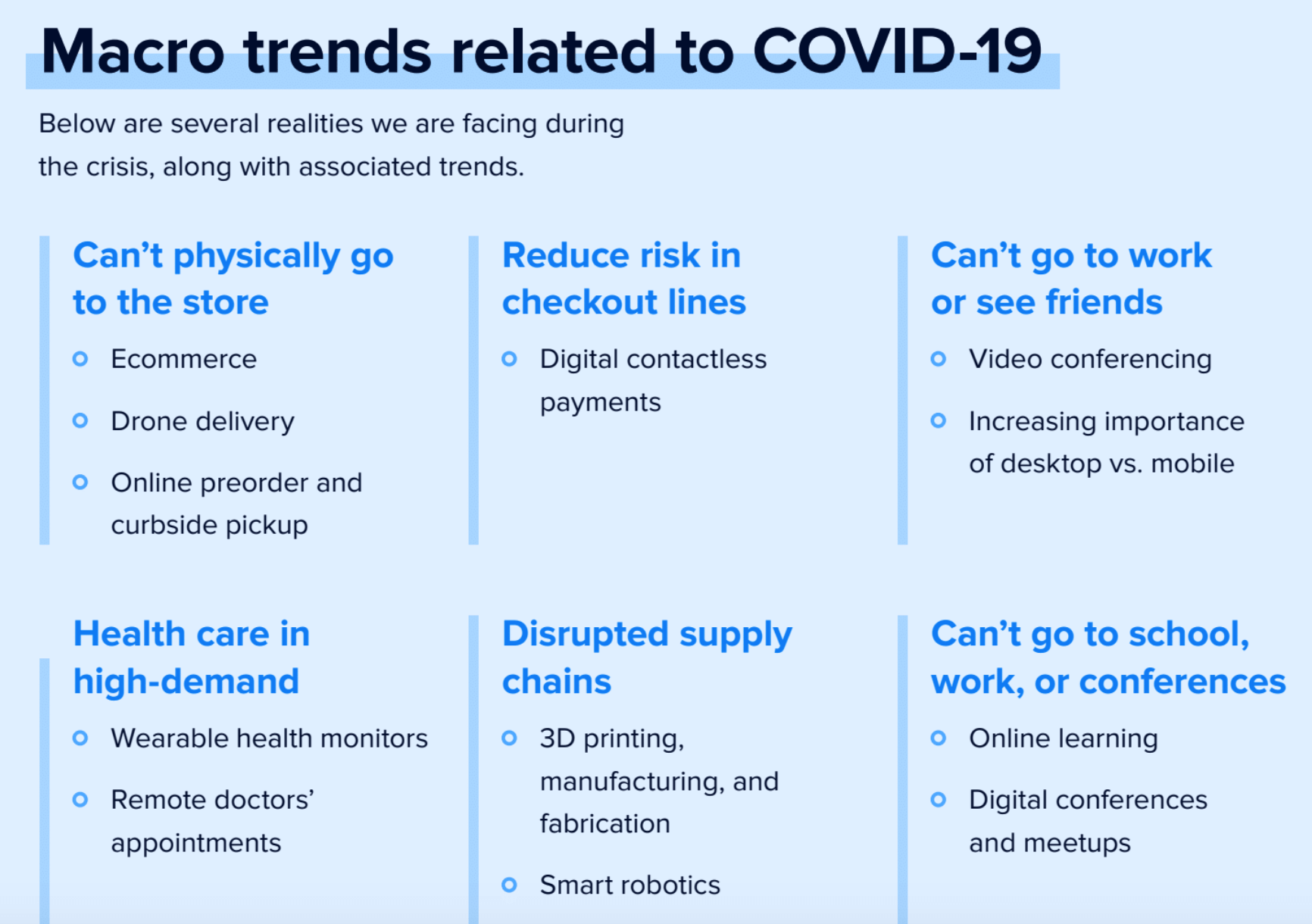How to pivot your product strategy and anticipate growth during a crisis

This post is an excerpt from our ebook, “Building excellent products in the age of remote work,” written to help you overcome today’s unique challenges and focus on what really matters—building excellent products that customers truly need.
Even before COVID-19, the writing was on the wall for product managers. The accelerated pace of technology markets, the new industries being disrupted by digital transformation, and rising customer expectations all screamed one thing: ship better products, faster.
“The accelerated pace of technology markets, the new industries being disrupted by digital transformation, and rising customer expectations all scream one thing: ship better products, faster.”
With COVID-19, product managers are experiencing even more pressure to get the right products to market – with fewer costly iterations. As the likelihood of churn increases and sales pipelines narrow or get pushed out, there is no longer room for error.
For many companies, this means re-forecasting their roadmap to mitigate risk, reduce costs, and make bets on new areas of growth for their product. This is easier said than done. First, you need a strong, foundational product strategy in place to inform prioritization decisions and seize new opportunities. Without this, you risk resorting to knee-jerk decisions in what is a highly unpredictable and fast-changing market.
Here are some ideas to help you navigate these choppy waters and turn crisis into opportunity.
Download the ebook now
Standardize your prioritization criteria and frameworks
In times of crisis, it is easy – and even reassuring – to default to a reactive mindset. With change coming quickly, this approach temporarily eases pressure and stress. However, reacting provides a quick fix rather than meaningful, long-term progress.
Instead, product managers should build an objective-driven product strategy that standardizes prioritization criteria and frameworks to ensure that:
- Your product strategy represents a plan for how to best arrive at your mid- to long-term product vision, accounting for any opportunities and constraints your organization is facing.
- Product strategies can be broken down into clear, measurable objectives that you can pursue in the short term to advance you in the right direction.
- Some product objectives relate to user needs and how you can create more value for customers. This requires a holistic view of what your users really need.
- Other product objectives represent the needs of your business and how you’ll overcome constraints, adapt to market conditions, and stay one step ahead of the competition.
With a clear strategy in place, your product management process will be more resilient to a crisis, and you will be able to assess and reprioritize items on your roadmap strategically rather than reactively.
Stay on top of changes in user behavior
On the product side, it is important to stay on top of changes in user behavior. After all, user needs can change dramatically during a crisis, impacting which products and features you should prioritize moving forward.
For example, if your product is expense-reporting software, you will likely see a large shift away from expenses related to business travel as long as COVID-19 restrictions remain in place. Instead, you’ll see that customers are submitting expenses related to the setup of home offices. The products and features you decide to build next should address this.
How is the current crisis affecting the way your customers use your products and services? What new trends are developing? How can you adapt your offering to better meet your customers’ changing needs? To answer these questions, you need to forget the assumptions you made during ‘normal’ times and dive deep into the data.
Analyze macro trends to anticipate new areas of growth
Anticipating new areas of growth following a crisis is a key way for businesses to come out on top. But how do you know where to look? Paying attention to macro trends and how they could potentially impact your industry can provide some answers.
Below are some realities we are now facing due to the COVID crisis, along with new trends that have arisen as a result:

These changes have major implications no matter what industry you’re in, and companies need to take them into account when rethinking their product strategy and planning for the future. In many cases, there will also be niche trends that affect your particular industry more than others.
By anticipating new trends and areas of growth before they become established, you stand a better chance of meeting your customers’ needs, potentially giving you a head start against competitors.
Accelerating out of the curve
In a recent article about surviving and thriving during times of crisis, Bain & Company likened economic downturns to a sharp bend on a racetrack. The best companies brake sharply coming into the bend, turn hard towards the apex of the curve, and then accelerate out of the curve.
In other words, when crisis strikes, the best companies re-forecast their product strategy, analyze new trends and how they impact business, then execute their new strategy quickly and efficiently, leaving competitors in their wake. Do this, and you’ll turn crisis into opportunity.




